

Browse by category
- Adaptive reuse
- Archaeology
- Arts and creativity
- Black heritage
- Buildings and architecture
- Communication
- Community
- Cultural landscapes
- Cultural objects
- Design
- Economics of heritage
- Environment
- Expanding the narrative
- Food
- Francophone heritage
- Indigenous heritage
- Intangible heritage
- Medical heritage
- Military heritage
- MyOntario
- Natural heritage
- Sport heritage
- Tools for conservation
- Women's heritage

- Home
- Adaptive reuse
- Archaeology
- Arts and creativity
- Black heritage
- Buildings and architecture
- Communication
- Community
- Cultural landscapes
- Cultural objects
- Design
- Economics of heritage
- Environment
- Expanding the narrative
Expanding the narrative
This is part of a broader conversation about whose history is being told, about gender, people of colour and the economically disenfranchised, and others whose stories have been overlooked or intentionally omitted from the authorized discussion.
- Food
- Francophone heritage
- Indigenous heritage
- Intangible heritage
Intangible heritage
Intangible cultural heritage includes language, traditions, music, food, special skills, etc.
- Medical heritage
- Military heritage
- MyOntario
- Natural heritage
- Sport heritage
- Tools for conservation
- Women's heritage
Overcoming historical amnesia: Recognizing people of African descent as pioneers and community builders


"Did you know? The British American Institute was a manual labour school established in 1841 through the efforts of J.C. Fuller, a Quaker from New York, Reverend Hiram Wilson, an agent for the American Anti-Slavery Society, and the Reverend Josiah Henson, a former slave. Henson and Wilson, on behalf of a board of directors, purchased 300 acres in Dawn Township at present-day Dresden to establish the school. A settlement formed around the school and came to be known as the Dawn Settlement. The Ontario Heritage Trust interprets this history at Uncle Tom’s Cabin Historic Site."
By
Marie Carter
Black heritage, Community
Published Date:10 Nov 2011
Photo: Ontario Heritage Trust plaque commemorating the Dawn Settlement
Essential Canadian history often recognizes people of African descent solely through the heroic stories of the Underground Railroad. These stories alone, however, do not represent the diversity of African-Canadians and their contributions.
In 2003, in Dresden, Ontario, developers of the Trillium Trail Historical Walk rejected the idea that the accomplishments of early Black pioneers were confined to their stories of escape. It posed an important question. If the majority of the population in their early community were people of African descent, would some of them not have made contributions similar to those of white settlers in developing the townsite?
Answering this question has led to a radically different understanding of the Dawn Settlement area and its citizens. People of African descent who settled here emerged as diverse individuals, including enterprising former slaves who cleared land and introduced new crops such as tobacco and hemp, and skilled tradespeople. A large percentage were also freemen, including professionals, business owners, and an elite group of successful people who brought their considerable resources with them and invested it in the community. Families like the Whippers, Hollensworths, Hills, Shadds and Charitys had a significant impact on the Dawn Settlement and the emerging community of Dresden.
The extended family or business associates of prominent Underground Railroad operatives like William Whipper were concerned with developing an infrastructure that would assist those who had fled north in successfully building a new life – as well as supporting their own families, whom they had moved north for safety after the passage of the draconian 1850 Fugitive Slave Act in the United States. That infrastructure included social institutions and professional services. From 1853 to 1873, their investments and presence injected new life into the Dawn Settlement. In 1854, the community had developed a flour mill, lumber mill, warehouse, an inn for travellers, a corn mill and various shops in Dresden. These individuals also included professionals who taught at schools and provided the community with a number of long unrecognized firsts, including the town’s first doctor (Dr. Amos Aray) and first real estate agent (J.B. Hollensworth).
The Dresden Cemetery gravesite memorial of Mary Anne Whipper-Hollensworth – William Whipper’s sister – is one of the rare pieces of physical evidence that remains of the community’s connection to a group of well-to-do Pennsylvanians. (Photo: Marie Carter)
Pennsylvanian William Whipper owned the majority of the original townsite after 1853, and held the mortgages on a number of properties he sold, allowing others to make a start – including at least one early white industrialist who would later be credited as a town founder. Whipper and his associates, meanwhile, would pass into historical obscurity.
The community at Dresden is working to rectify this and other instances of historical amnesia by recognizing these early pioneers and community builders – and later civil rights activists – in a variety of historical projects.
Did you know? In 2010, an Ontario Heritage Trust plaque was installed on the town’s main street to commemorate Hugh Burnett and the National Unity Association whose activism at Dresden led to the creation of the Fair Employment Practices Act and the Fair Accommodation Practices Act in Ontario. New history projects continue to reflect the multicultural nature of the town’s early history and development.
RelatedStories
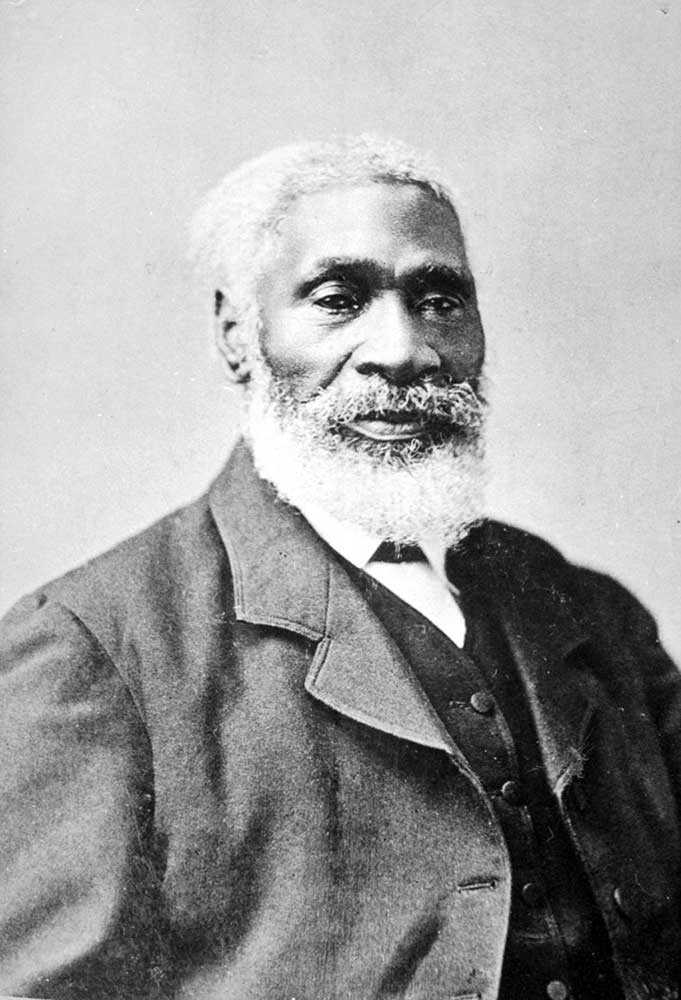
- 27 Jul 2022
- Expanding the narrative
Black heritage - Author: Beth Hanna and Steven Cook,
Celebrating Josiah – Introducing the Josiah Henson Museum of African-Canadian History
“I’ll use my freedom well.” Josiah Henson made this promise to Captain Burnham, who helped him and his family in the last part of their...
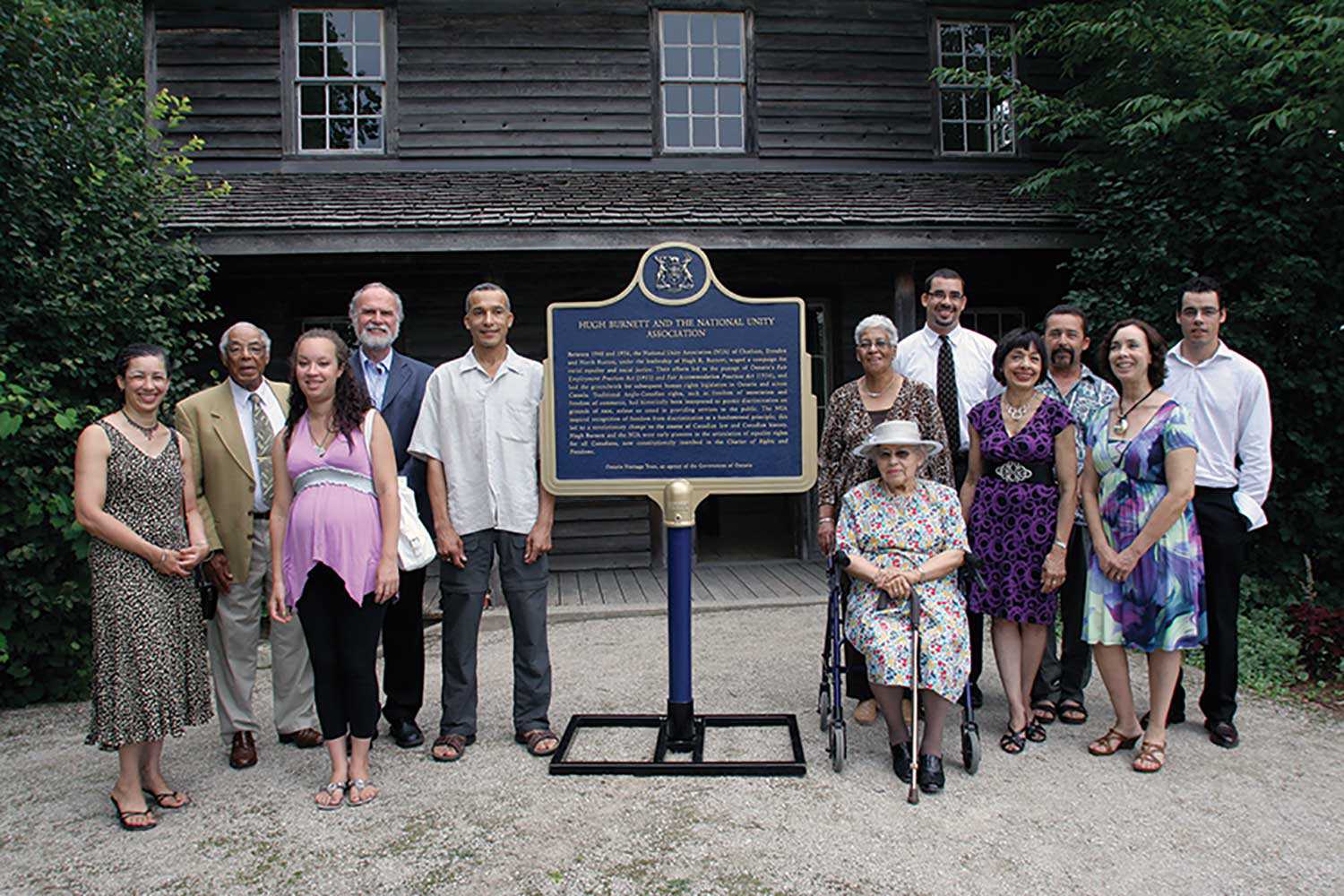
- 21 Apr 2022
- Expanding the narrative
Black heritage - Author: Beth Hanna,
Setting the record straight – Updating four Black history plaques
I’d like to tell you about Solomon Moseby. In 1837, Moseby fled to Niagara to escape slavery in Kentucky. When his extradition back to the...

- 01 Oct 2019
- Economics of heritage
Buildings and architecture
Community
Adaptive reuse - Author: David Leonard,
How Doors Open Ontario activates the province’s communities
The Ontario Heritage Trust’s Doors Open Ontario program works with communities and partners to open the doors, gates and courtyards of Ontario’s most unique and...

- 01 Oct 2019
- Economics of heritage
Buildings and architecture
Arts and creativity
Community
Adaptive reuse - Author: Christina Jennings,
Quiet on the set
Shaftesbury is the company behind the hit television series Murdoch Mysteries and Frankie Drake Mysteries, both of which air on CBC in Canada and are...

- 01 Oct 2019
- Economics of heritage
Buildings and architecture
Community
Adaptive reuse - Author: Emily Sajdak,
The economic halo effect of sacred places: Measuring civic impact in an innovative new way
Nestled in the old city of Philadelphia, Pennsylvania, Old St. George’s United Methodist Church is a “mother church” of the denomination and the oldest Methodist...

- 01 Oct 2019
- Economics of heritage
Buildings and architecture
Community
Adaptive reuse - Author: Erin Semande,
Case study: Brockville Railway Tunnel
Location: 1 Block House Island Road, BrockvilleOwner: City of BrockvillePartners: Brockville Railway Tunnel Committee (plus countless generous donors)Original use: Canada’s first railway tunnel and part...

- 01 Oct 2019
- Economics of heritage
Buildings and architecture
Community
Food
Adaptive reuse - Author: Erin Semande,
Case study: Mudtown Station Brewery and Restaurant (Owen Sound)
Location: 1198 1st Avenue East, Owen SoundOwner: City of Owen SoundPartners: Kloeze Family (Mudtown Station Inc.)Original use: Passenger train station (Owen Sound Canadian Pacific Railway...

- 01 Oct 2019
- Economics of heritage
Buildings and architecture
Community
Adaptive reuse - Author: John Coleman,
Learning from the past
Heritage has always been at the heart of the University of Windsor’s ambitious plan to preserve the century-old Windsor Armouries and transform the building into...

Museums and heritage: Building livable communities through soft power
Museums and heritage are engines of urban redesign and revitalization. Lord Cultural Resources has worked in 450 cities worldwide on some 2,600 museums, cultural plans...

- 01 Oct 2019
- Economics of heritage
Archaeology
Community - Author: Donovan Rypkema,
Nine ways that heritage conservation is good for the economy
Advocates for heritage conservation have traditionally made their case on the basis of architectural character, cultural significance, social relevance, esthetic quality and other values of...

- 01 Oct 2019
- Indigenous heritage
Community - Author: Kayleigh Speirs and Art Hunter,
Present. Preserve. Protect.
Kay-Nah-Chi-Wah-Nung Historical Centre, the Place of the Long Rapids, is a historically significant meeting place located along the banks of Manidoo Ziibi (Spirit River or...

- 01 Oct 2019
- Economics of heritage
Buildings and architecture
Community
Adaptive reuse - Author: Kiki Aravopoulos,
Case study: Thunder Bay District Courthouse
Location: 277 Camelot Street, Thunder BayOwner: David Sun, Business owner/InvestorPartners: Ascend HotelsOriginal use: CourthouseCurrent use: Hotel The former Thunder Bay District Courthouse sits perched atop...

- 01 Oct 2019
- Economics of heritage
Community - Author: Jan Hawley et Carolyn Parks Mintz,
From adversity to the stars
The rural Municipality of Huron East is a composite of rolling farmland and historical settlements dating back to the mid-1800s. Although agriculture, manufacturing and a...

- 01 Oct 2019
- Economics of heritage
Buildings and architecture
Community
Adaptive reuse - Author: Jennifer Campbell,
Heritage builds vibrant communities and cultural economies in Kingston
In 2010, the City of Kingston released its first Culture Plan – a document that shared a sustainable, authentic, longterm vision for cultural vitality in...

- 01 Oct 2019
- Economics of heritage
Buildings and architecture
Community
Adaptive reuse - Author: Paul Shaker,
The economic value of heritage districts: How assessment growth in heritage conservation districts compares with non-designated areas in Hamilton
There are competing views about the value of heritage properties. On the one hand, there is a growing consensus on the esthetic and economic development...

- 01 Oct 2019
- Economics of heritage
Buildings and architecture
Environment
Community
Adaptive reuse - Author: Clare Ronan,
Reside: When heritage preservation translates to affordable housing
Raising the Roof is a Canadian charity that provides national leadership in homelessness prevention through various initiatives. Reside is one such project that creates affordable...

- 01 Oct 2019
- Economics of heritage
Buildings and architecture
Community
Adaptive reuse - Author: Thompson M. Mayes,
Old places support a sound, sustainable and vibrant economy
In Why Old Places Matter, I wrote about the many reasons that old places help people flourish. Yet, I intentionally saved the discussion of how...

- 01 Oct 2019
- Economics of heritage
Buildings and architecture
Community
Adaptive reuse - Author: Beth Hanna,
Revitalizing communities – The power of conservation
Over the past few years, I’ve spoken and written extensively about value – exploring questions of what we protect, how we make those decisions, and...

- 20 Mar 2019
- Community
Communication - Author: Beth Hanna,
Communication – Forging community, building understanding, shaping society
Humans have always shared an interest in communicating with one another – to exchange stories, experiences, ideas, thoughts. To be in community with one another...
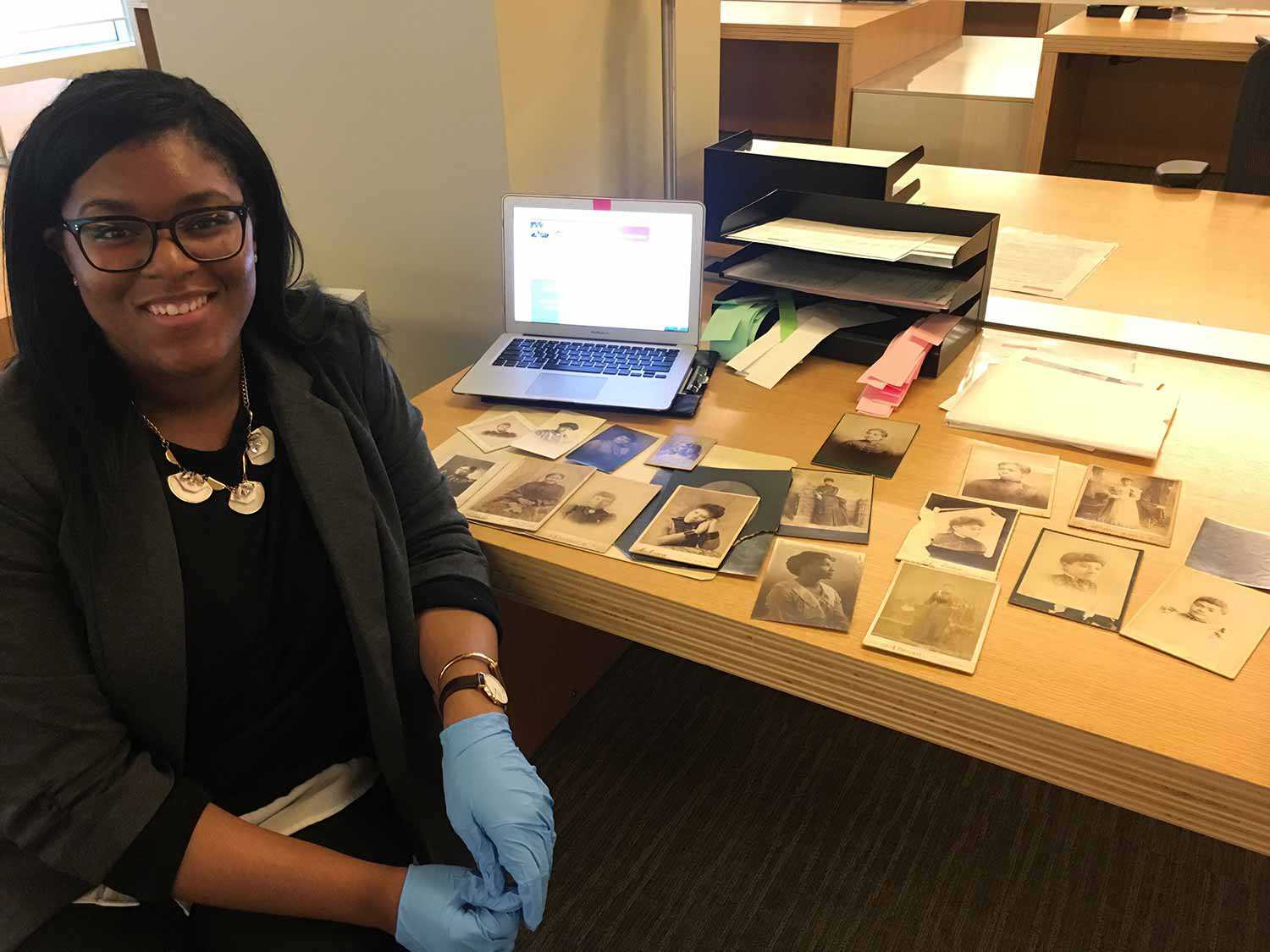
- 07 Sep 2018
- Expanding the narrative
Black heritage - Author: Kendra Campbell,
To be dignified, stylish and Black in the 19th century was to defy expectations
In summer 2018, the Black Artists’ Networks Dialogue Gallery and Cultural Centre (BAND) presented Redefining Black Identity, an exhibit that featured 19th-century Black portraiture. The...
![F 2076-16-3-2/Unidentified woman and her son, [ca. 1900], Alvin D. McCurdy fonds, Archives of Ontario, I0027790.](https://heritage-matters.ca/uploads/Articles/27790_boy_and_woman_520-web.jpg)
- 20 Mar 2018
- Women's heritage
Black heritage - Author: Natasha Henry,
We’ve always been here: Black women’s history of voting rights and politics in Canada
The history of Black women’s voting rights in Canada must be understood in the context of their evolving social status in the nation’s preceding French...

- 20 Mar 2018
- Women's heritage
Black heritage - Author: Beth Hanna,
From Happy Hill to Parliament Hill: An interview with trailblazer Jean Augustine
Among her many accolades, the Honourable Jean Augustine has the distinction of being Canada’s first Black female Member of Parliament and Cabinet Minister. An educator...

- 17 Feb 2017
- Community
- Author: The Honourable Elizabeth Dowdeswell,
The conscience of our province
Ontario’s Legislative Building, completed in 1893, is a magnificent structure filled with stories from the most significant moments in our province’s modern history. The place...

- 17 Feb 2017
- Black heritage
MyOntario - Author: Holly Martelle,
Hopes for the future
My life as an archaeologist often consists of hour upon hour of painstaking analysis of small bits and pieces of everyday life. But last year...

- 17 Feb 2017
- Black heritage
MyOntario - Author: Adrienne Shadd,
Reflections on my hometown
In the year of the 150th birthday of Canada, I would like to pay tribute to my hometown. North Buxton started out in 1849 as...

- 17 Feb 2017
- Black heritage
MyOntario - Author: Karolyn Smardz Frost,
Digging for the Promised Land
In 1985, the Toronto school board and Ontario’s culture ministry created the Archaeological Resource Centre. There, schoolchildren and volunteers could dig into their own city’s...
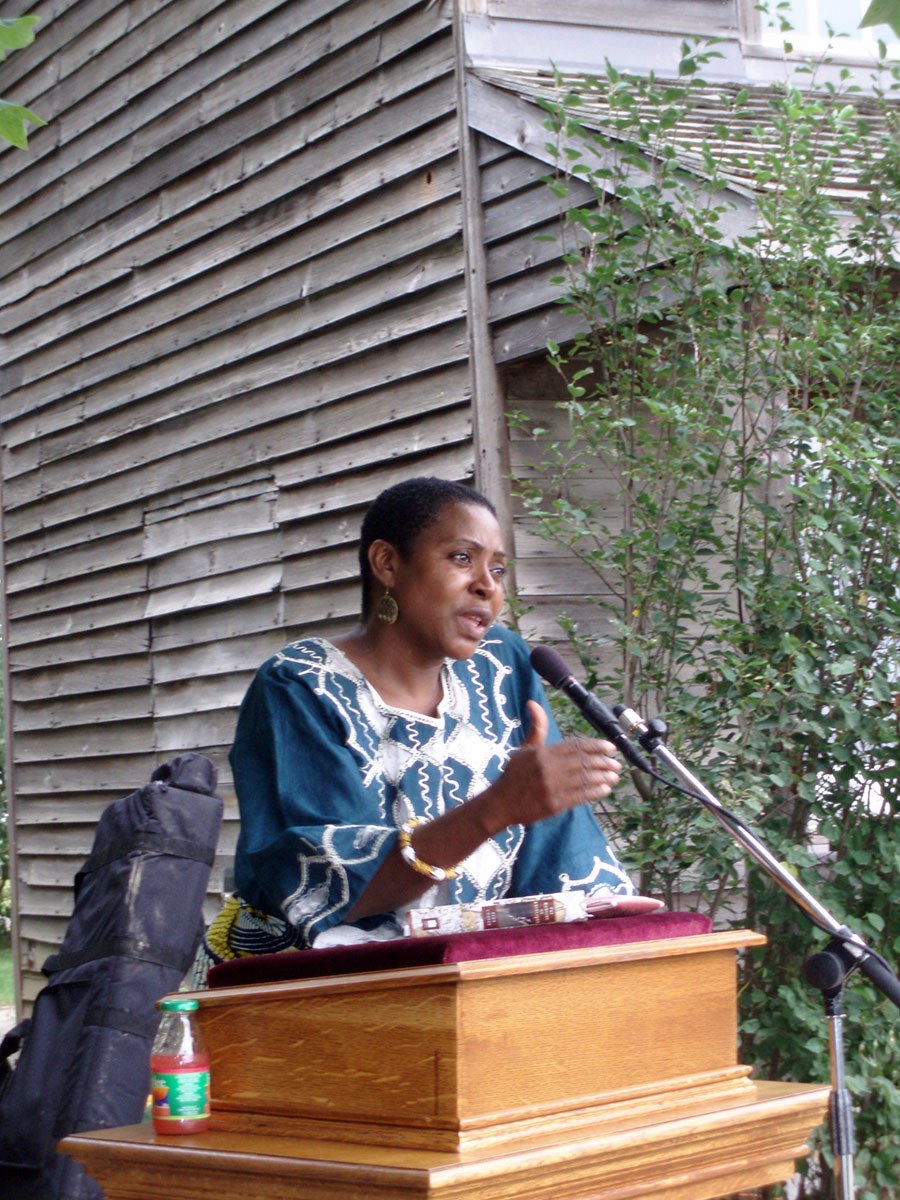
- 17 Feb 2017
- Black heritage
MyOntario - Author: Dr. Afua Cooper,
The Black history of Ontario inspires me and defines who I am
Peggy Pompadour haunts me. I walk through the streets of Ye Olde Towne Toronto and I feel her presence – this Black enslaved woman who...

- 05 Dec 2014
- Buildings and architecture
Community - Author: Valerie Verity,
A story of two families
What a story the Macdonell-Williamson House and property can tell! Its location – with a commanding view overlooking the Ottawa River (where goods and people...
![J.E. Sampson. Archives of Ontario War Poster Collection [between 1914 and 1918]. (Archives of Ontario, C 233-2-1-0-296).](https://heritage-matters.ca/uploads/Articles/Victory-Bonds-cover-image-AO-web.jpg)
- 14 Feb 2014
- Military heritage
Community - Author: Wayne Kelly,
On the eve of war: Ontario in 1914
What was life like in Ontario during those years before the First World War? Before the war that saw men leave their families and friends...

- 14 Feb 2014
- Military heritage
Community - Author: Jonathan F. Vance,
Fighting power: Ontario soldiers in the making
That Canadians are an unmilitary people has become something of a cliché. But a look back at Ontario in the summer of 1914 might leave...

- 14 Feb 2014
- Military heritage
Community - Author: Erin Semande,
The end of an era
The years before the Great War are often romanticized as a series of garden parties, Sunday afternoon strolls in the park, stopping everything for afternoon...

- 10 May 2013
- Community
Tools for conservation - Author: Robert Tremain,
Oil Springs Heritage District: Working from the ground up
In the mid-19th century, southwestern Ontario was Canada West’s last frontier, where lines of travel, civility and comfort faced the untamed. From these impassable wetlands...

- 10 May 2013
- Buildings and architecture
Community
Tools for conservation - Author: Jim Leonard,
Heritage conservation districts: The most popular tool in the heritage toolkit?
When the Ontario Heritage Act came into force in 1975, municipalities across the province suddenly had the authority to protect and enhance “groups of properties...

- 10 May 2013
- Buildings and architecture
Community
Tools for conservation - Author: Mark Warrack,
How districts change
Meadowvale Village – a once-small, rural village – is located on the Credit River at the north end of the City of Mississauga. In the...

- 10 May 2013
- Buildings and architecture
Community
Tools for conservation - Author: Joan Mason,
Grassroots heritage: The stewards of New Edinburgh
Located in the City of Ottawa at the confluence of the Rideau and Ottawa rivers is the historical community of New Edinburgh. With its roots...

- 10 May 2013
- Buildings and architecture
Community - Author: Stephen Ashton,
Heritage conservation people
Growing up in Port Hope fostered a belief that every community had an amazing main street. That ignorance was shaken when I returned from university...

The Goderich story: A lesson in survival
For the past 18 months, West Street in Goderich has been as much a construction site as it has a place of service and retail...

- 12 Oct 2012
- Community
Cultural landscapes - Author: Catharine A. Wilson,
Coming together
Neighbourliness has always been a part of Ontario’s rich agricultural heritage. Much of what we view in the rural landscape today was once created by...

- 18 May 2012
- Black heritage
Francophone heritage - Author: Emanuel da Silva and Diane Farmer,
Portrait of a growing diversity
Ontario has the largest number of francophones outside Québec. While that number has increased since 1951, it has not grown nearly as quickly as the...

- 17 Feb 2012
- Black heritage
Military heritage - Author: Wayne Kelly,
Fighting for freedom
What must Richard Pierpoint have thought in 1812 when he heard the war drums beating again? Abducted from Senegal at the age of 16, Pierpoint...
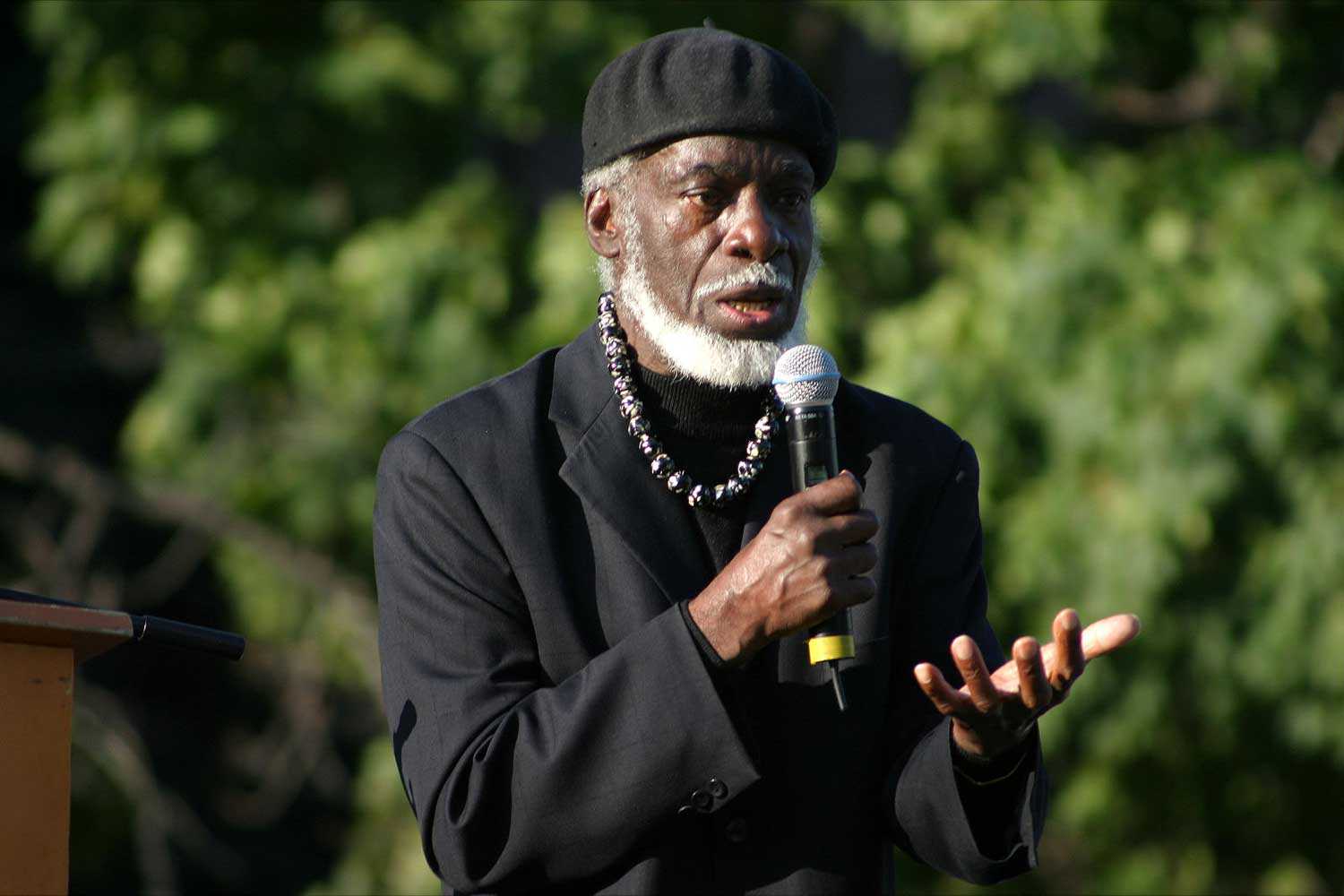
- 10 Nov 2011
- Black heritage
- Author: Mesfin Aman,
A tribute to Dudley Laws
In February 2011, Dudley Laws checked himself out of hospital against medical opinion to honour a commitment previously made to inmates at Joyceville Institution in...

- 10 Nov 2011
- Black heritage
- Author: P. Afua Marcus,
Len Gibson: Ontario dance pioneer
In this year declared by the United Nations as the International Year for People of African Descent, I think about dance in African Diaspora communities...
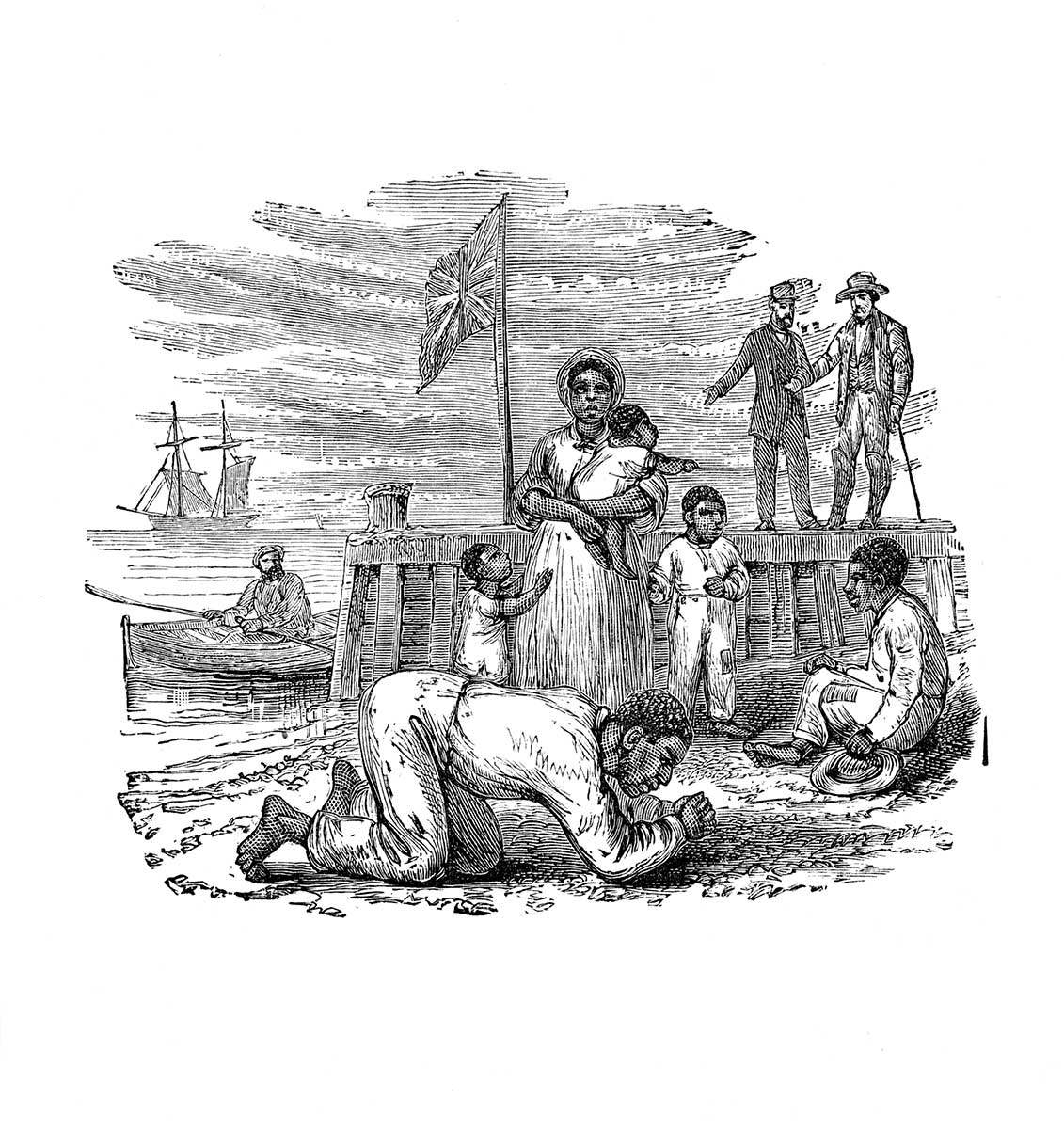
- 10 Nov 2011
- Black heritage
- Author: Nina Reid-Maroney,
The life of the mind in the Promised Land
In the spring of 1861, a young black Philadelphian named Parker Theophilus Smith sold his belongings – including his extensive library of ethnography, history, mathematics...

- 10 Nov 2011
- Black heritage
- Author: Rosemary Sadlier,
Recognition, justice and development
How do we recognize people of African descent in Ontario? How do we deal with their issues to provide them with justice? How do we...

- 10 Nov 2011
- Black heritage
- Author: Karolyn Smardz Frost,
The UNESCO Slave Route Project: Itineraries of African-Canadian memory
In honour of the United Nations’ designation of 2011 as the International Year for People of African Descent, the Harriet Tubman Institute for Research in...

- 10 Nov 2011
- Black heritage
- Author: Ontario Heritage Trust,
Resources: Celebrating the International Year for People of African Descent
What's on the shelf The Journey from Tollgate to Parkway: African-Canadians in Hamilton, by Adrienne Shadd (Dundurn Press Ltd. 2010) When the Lincoln Alexander Parkway...

- 10 Nov 2011
- Black heritage
- Author: Thando Hyman,
The journey of the Africentric Alternative School
As traditional approaches to education continued to negate, under-represent and marginalize the contributions of African-Canadians, vocal critics of the report entitled Toward a New Beginning...

- 10 Nov 2011
- Black heritage
- Author: Dr. Afua Cooper,
Celebrating the International Year for People of African Descent
The United Nations (UN) has designated 2011 as the International Year for People of African Descent. The UN recognizes that, worldwide, people of African heritage...

- 10 Nov 2011
- Black heritage
- Author: Sam Wesley,
Changing perspectives on the past
The Ontario Heritage Trust’s provincial plaque program has existed for more than 50 years. Throughout this time, it has commemorated several people, places and events...
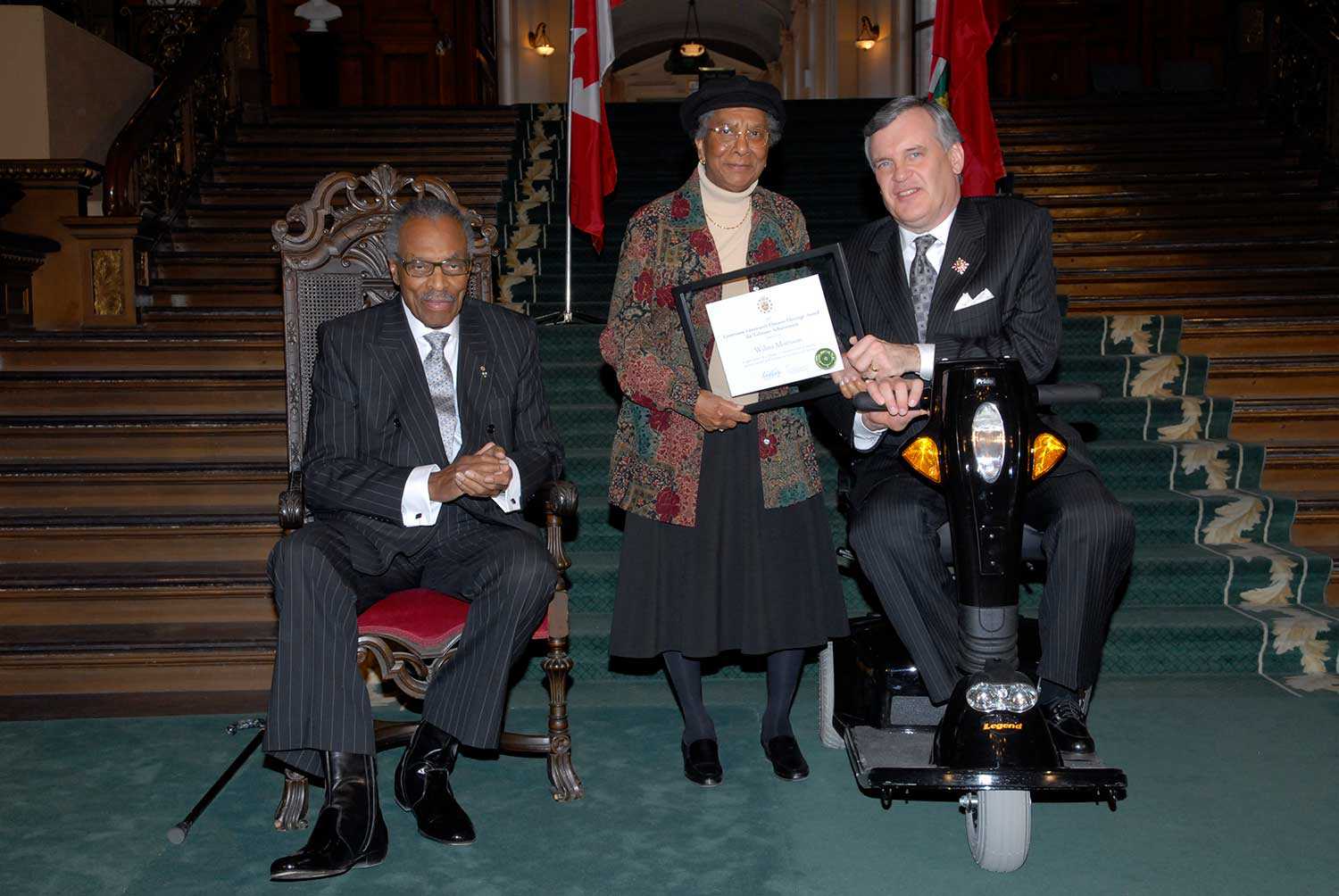
- 10 Nov 2011
- Women's heritage
Black heritage - Author: Adrienne Shadd,
Wilma Morrison: A life of activism
By now, many people in the heritage community and the city of Niagara Falls, Ontario are familiar with the woman who is practically synonymous with...

- 10 Nov 2011
- Black heritage
- Author: Tamari Kitossa,
Looking beyond the law
This International Year goes beyond recognizing the contributions that African-descended people have made toward the economic, cultural and material enrichment of the West. It is...
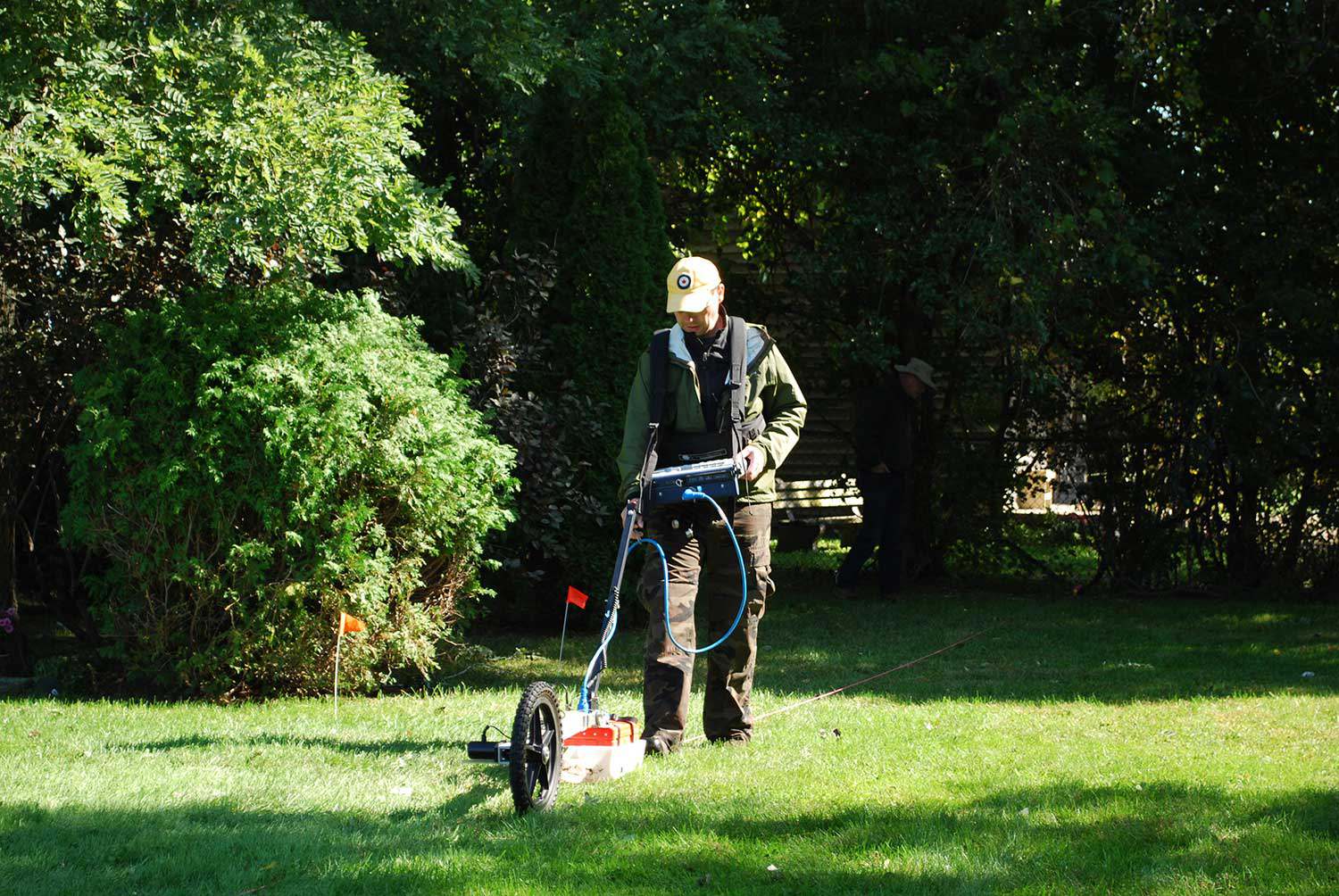
- 10 Nov 2011
- Black heritage
Archaeology - Author: Dena Doroszenko,
Breaking ground virtually: Looking through the Henson Family cemetery
Many have forgotten how influential Harriet Beecher Stowe’s novel Uncle Tom’s Cabin was at the time of its 1852 publication. It was a catalyst for...

- 31 May 2011
- Buildings and architecture
Natural heritage
Community
Tools for conservation - Author: Sean Fraser, Erin Semande and Mike Sawchuck,
Investing in preservation
It is an unfortunate reality that the preservation of our heritage remains the exception rather than the norm. What is a common-sense approach to living...

- 28 Jan 2011
- Buildings and architecture
Community - Author: Michael Eamon,
Into the Kawarthas
When visitors first enter Peterborough’s stately city hall, they should look down. Inspired by the City Beautiful Movement – active in Canada from 1893 to...

- 28 Jan 2011
- Expanding the narrative
Community - Author: James Raffan,
CCM 3.0: Reimagining the Canadian Canoe Museum
A decade has passed since the permanent exhibits at The Canadian Canoe Museum (CCM) were opened to great acclaim. Funded with help from the federal...

- 28 Jan 2011
- Buildings and architecture
Community
Adaptive reuse - Author: Barb McIntosh,
Peterborough’s Living History Museum
Hutchison House holds a special place in the social history of Peterborough. Local volunteers built the house in 1836 to persuade one of their first...

- 07 Oct 2010
- Community
Cultural landscapes - Author: Beth Anne Mendes,
The People’s park
Queen’s Park, Toronto, was officially opened by the Prince of Wales (later King Edward VII) in September 1860, and was a forerunner of the late-19thcentury...

- 06 May 2010
- Buildings and architecture
Community - Author: Ontario Heritage Trust,
Resources: Finding our place in Ontario’s history
On the shelf Creating Memory, by John Warkentin Becker Associates, 2010. Toronto has over 6,000 public outdoor sculptures, works of art that provide a sense...

- 06 May 2010
- Buildings and architecture
Community - Author: Regan Hutcheson and Leah Wallace,
Designations in bulk
Understanding Unionville, by Regan Hutcheson A visit to Unionville is like a journey back in time. Located north of Toronto in the heart of Markham...

- 06 May 2010
- Buildings and architecture
Community - Author: Sally Coutts,
Leading by example
Ontario towns and cities have been designating properties under Part IV of the Ontario Heritage Act since the passage of the act in the 1970s...

- 06 May 2010
- Buildings and architecture
Community - Author: Dave Benson,
Cataloguing a community
The amalgamated municipality of Chatham-Kent includes a number of early settlements that encompass thousands of heritage buildings. Recently, Heritage Chatham-Kent (HC-K), our municipal heritage committee...

- 06 May 2010
- Community
- Author: Dr. Fraser Dunford,
Self-identifying
While we are all familiar with local archives, museums and libraries (and the materials they contain), you may be startled to discover what individual collections...

- 11 Feb 2010
- Buildings and architecture
Community - Author: Evelyn G. McLean,
Walkerville: The heritage of a company town
Among the shrinking number of 19th-century company towns, Walkerville – part of the City of Windsor since 1935 – remains an outstanding example of what...

- 11 Feb 2010
- Buildings and architecture
Community - Author: Kathryn McLeod,
Exploring Ontario’s southern peninsula
As you roam the highways and waterways of Ontario’s southern peninsula, a tapestry of stories unravels. These stories speak about settlement and growth, a testament...

- 11 Feb 2010
- Buildings and architecture
Community
Cultural landscapes - Author: Dave Benson,
The history of Chatham-Kent
Chatham-Kent’s rich cultural heritage began long before European settlement when large stockaded villages and Neutral Indians dominated the Thames River and the Lake Erie-Lake St...

- 10 Sep 2009
- Buildings and architecture
Community - Author: Alison Little,
A legacy of support: Faith-based community
Reaching out to those in need has long been a part of Ontario’s religious tradition. Faith-based groups offering medical and social assistance arrived with the...

- 10 Sep 2009
- Buildings and architecture
Community - Author: Jennifer Drinkwater,
Toronto’s synagogues: Keeping collective memories alive
Collective memory is cultural memory – what is remembered about an event by a social or cultural group that experienced it and by those to...

- 10 Sep 2009
- Buildings and architecture
Community - Author: David Cuming,
From Hamilton, a municipal perspective
Places of worship are often stunning buildings, constructed in forms and styles that have existed for thousands of years around the world, using specialized techniques...

- 10 Sep 2009
- Buildings and architecture
Community - Author: Vicki Bennett,
Form and function: The impact of liturgy, symbolism and use on design
During the 19th century, the location, physical condition and stylistic merit of churches were publicly discussed as reliable indicators of a community’s value, moral fabric...

- 10 Sep 2009
- Buildings and architecture
Community - Author: Jane Burgess and Ann Link,
Enduring stewardship preserves a treasured heritage church
Located just east of Beaverton, the Old Stone Church, built in 1840 by a predominantly Scottish congregation, is a simple but handsomely proportioned small Georgian...

- 10 Sep 2009
- Buildings and architecture
Community - Author: Laura Hatcher,
The changing face of worship
The architectural style, massing, materials and date stones of a place of worship offer clues about the congregation’s history and values. Likewise, the building’s size...

Religious freedom in the promised land
Eli Johnson toiled on plantations in Virginia, Mississippi and Kentucky before making his bid for freedom in the “promised land” – the term used by...

- 10 Sep 2009
- Buildings and architecture
Community
Cultural landscapes - Author: Wendy Shearer,
Places of worship in Ontario’s rural cultural landscape
The cultural landscapes of rural southern Ontario contain a variety of heritage resources – land patterns and uses, built forms and natural features. Within these...

- 10 Sep 2009
- Indigenous heritage
Buildings and architecture
Community - Author: Yves Frenette,
Churches of “New Ontario”
In the middle of the 19th century, northern Ontario remained much as it had been under the French regime – a region of Catholic missions...

- 10 Sep 2009
- Indigenous heritage
Buildings and architecture
Francophone heritage
Community - Author: Wayne Kelly,
Ontario’s rich religious heritage
From the First People who for thousands of years conducted religious and cultural ceremonies at places they believed held spiritual significance, to subsequent arrivals who...

- 10 Sep 2009
- Indigenous heritage
Buildings and architecture
Community
Cultural objects - Author: Kathryn McLeod,
Christ Church and the Queen Anne Silver
Located in Tyendinaga Mohawk Territory on the Bay of Quinte, Christ Church houses a silver communion service dating to 1712. This remarkable service represents an...

- 10 Sep 2009
- Buildings and architecture
Community - Author: Richard Moorhouse,
Launching the Places of Worship Inventory
Survey, documentation and research – these are the first steps in the conservation process. How can decisions be made about our heritage without first acquiring...

- 28 May 2009
- Buildings and architecture
Community
Tools for conservation - Author: Sean Fraser,
Subsidizing demolition
In nature, there is no such thing as waste. Nature operates in an endless web of interconnected cycles of use, transformation and reuse. The concept...

- 28 May 2009
- Buildings and architecture
Natural heritage
Community - Author: Tamara Chipperfield and Kiki Aravopoulos,
Heritage in harmony: The integration of natural and cultural landscapes
Approximately 11,000 years of human culture are recorded in Ontario’s landscapes. Most existing natural landscapes in Ontario today have intrinsic cultural heritage meaning and significance...

- 28 May 2009
- Buildings and architecture
Community - Author: Erin Semande,
The sustainability of place
Located on the Lake Huron shore at the mouth of the Maitland River, Goderich is known as “Canada’s Prettiest Town.” It is situated in what...

- 12 Feb 2009
- Buildings and architecture
Community - Author: Kathryn McLeod,
Heritage off the 401
Highway 401, stretching from Windsor to the Quebec border, is one of the busiest highways in North America. Anyone who has journeyed east of Toronto...

- 12 Feb 2009
- Buildings and architecture
Community - Author: Romas Bubelis,
Building on the past
Eastern Ontario offers an array of impressive historic houses. Some of these houses – owned and operated by the Ontario Heritage Trust – are featured...

- 12 Feb 2009
- Buildings and architecture
Community
Adaptive reuse - Author: Glenda Jones,
From mill to museum
The big oak door of the Mississippi Valley Textile Museum in Almonte in eastern Ontario swings silently open as it has done for over 10...

- 12 Feb 2009
- Buildings and architecture
Community - Author: Wayne Kelly and Kathryn McLeod,
Ontario's eastern treasures
Inhabited by Aboriginal Peoples for 7,000 years, present-day eastern Ontario is rich with heritage. The area gradually transformed as French and later United Empire Loyalists...

- 12 Feb 2009
- Community
- Author: Liane Nowosielski,
Honouring Ontario’s premiers
The Ontario Heritage Trust launched the Premiers’ Gravesites Program at a memorable ceremony last November in Cornwall to commemorate the province’s first premier – The...

- 11 Sep 2008
- Buildings and architecture
Community
Adaptive reuse - Author: Erik R. Hanson,
Second chances for Peterborough’s priceless heritage
One of the greatest challenges to creating a healthy downtown is getting people to live there. While Peterborough’s historic centre is full of beautiful heritage...

- 11 Sep 2008
- Buildings and architecture
Community - Author: Marcus R. Létourneau,
Kingston’s heritage: Time and again
The City of Kingston sits at a strategic location, halfway between Montreal and Toronto, where Lake Ontario meets the western end of the St. Lawrence...

- 12 Jun 2008
- Buildings and architecture
Community - Author: Thomas Wicks,
A renaissance of northern heritage
After railway development connected this once-isolated area to the rest of the province at the end of the 19th century, the abundant natural resources attracted...

- 12 Jun 2008
- Community
- Author: Nicole Guertin and Andréanne Joly,
Northern Ontario: An authentic heritage
Heritage is often associated with the distant past and, for many, a dusty museum. Northern Ontario, however, is proposing a rejuvenation of its heritage by...

- 12 Jun 2008
- Expanding the narrative
Community - Author: Beth Anne Mendes,
Routes through the wilderness: The development of a transportation network in Northern Ontario
Isolation, great distances, demanding terrain and difficult weather conditions challenged the fortitude and perseverance of the people who forged water routes, roads, railways and air...

- 12 Jun 2008
- Buildings and architecture
Community - Author: Denis Héroux,
Adventurous workers wanted for remote locations – Housing provided
The exploration, settlement and development of northern Ontario were motivated by the exploitation of the region’s natural resources – primarily fur, timber, gold and silver...

- 12 Jun 2008
- Francophone heritage
Community - Author: Karen Bachmann,
Our Francophone heritage
Fauquier. Moonbeam. Kapuskasing. Hearst. Val Gagné. Belle Vallée. Sudbury. Timmins. Sturgeon Falls. The history of northern Ontario cannot be told without looking at the contributions...

- 12 Jun 2008
- Buildings and architecture
Community - Author: Romas Bubelis,
Northern icons
The towering McIntyre Mine Headframe in Timmins. The Clergue Block House and Powder Magazine in Sault Ste Marie. St. Francis of Assisi Anglican Church in...

- 12 Jun 2008
- Buildings and architecture
Community
Cultural landscapes - Author: Sean Fraser,
The historical Cobalt Mining District – A community resource
At the turn of the 20th century, Cobalt was a small and isolated lumber camp. In August 1903, two lumbermen – James McKinley and Ernest...

- 14 Feb 2008
- Community
Tools for conservation - Author: David Tremblay,
Community conservation: Ingredients for success
For the past seven years, a group called SOS-Églises has led the fight to preserve two century-old village churches in Essex County. Located in Pointe-aux-Roches...

- 14 Feb 2008
- Community
Tools for conservation - Author: Ontario Heritage Trust,
Resources: Engaging citizens in community conservation
What's on the shelf Old Canadian Cemeteries: Places of Memory, by Jane Irwin with photographs by John de Visser (2007) Firefly Books. Canada abounds in...
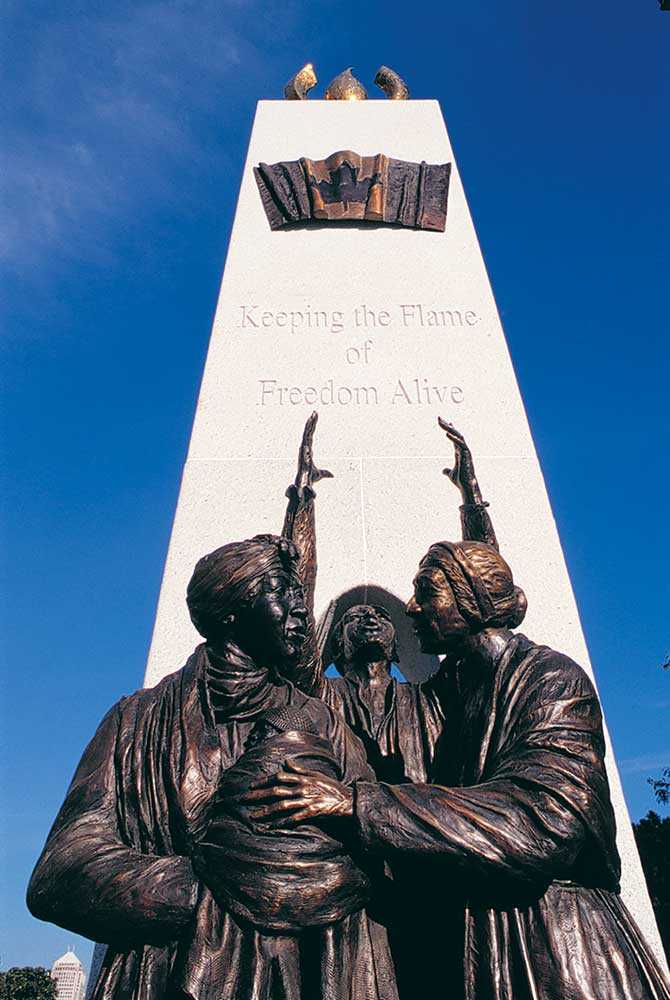
- 14 Feb 2008
- Black heritage
- Author: Steven Cook,
Ontario’s Black heritage network
In 2007, the Ontario Heritage Trust undertook a number of initiatives, with funding support from the Ministry of Citizenship and Immigration, to commemorate the 200th...

- 15 Nov 2007
- Buildings and architecture
Community - Author: Beth Anne Mendes,
Discovering the City Beautiful
On July 25, 2007, the Ontario Heritage Trust and the Town of Kapuskasing unveiled a provincial plaque to commemorate the town plan that helped shape...

- 27 Jul 2007
- Black heritage
- Author: Colin McCullogh,
Chloe Cooley and the limitation of slavery in Ontario
On March 14, 1793 Chloe Cooley, an enslaved Black woman in Queenston, was bound, thrown into a boat and sold across the river to a...
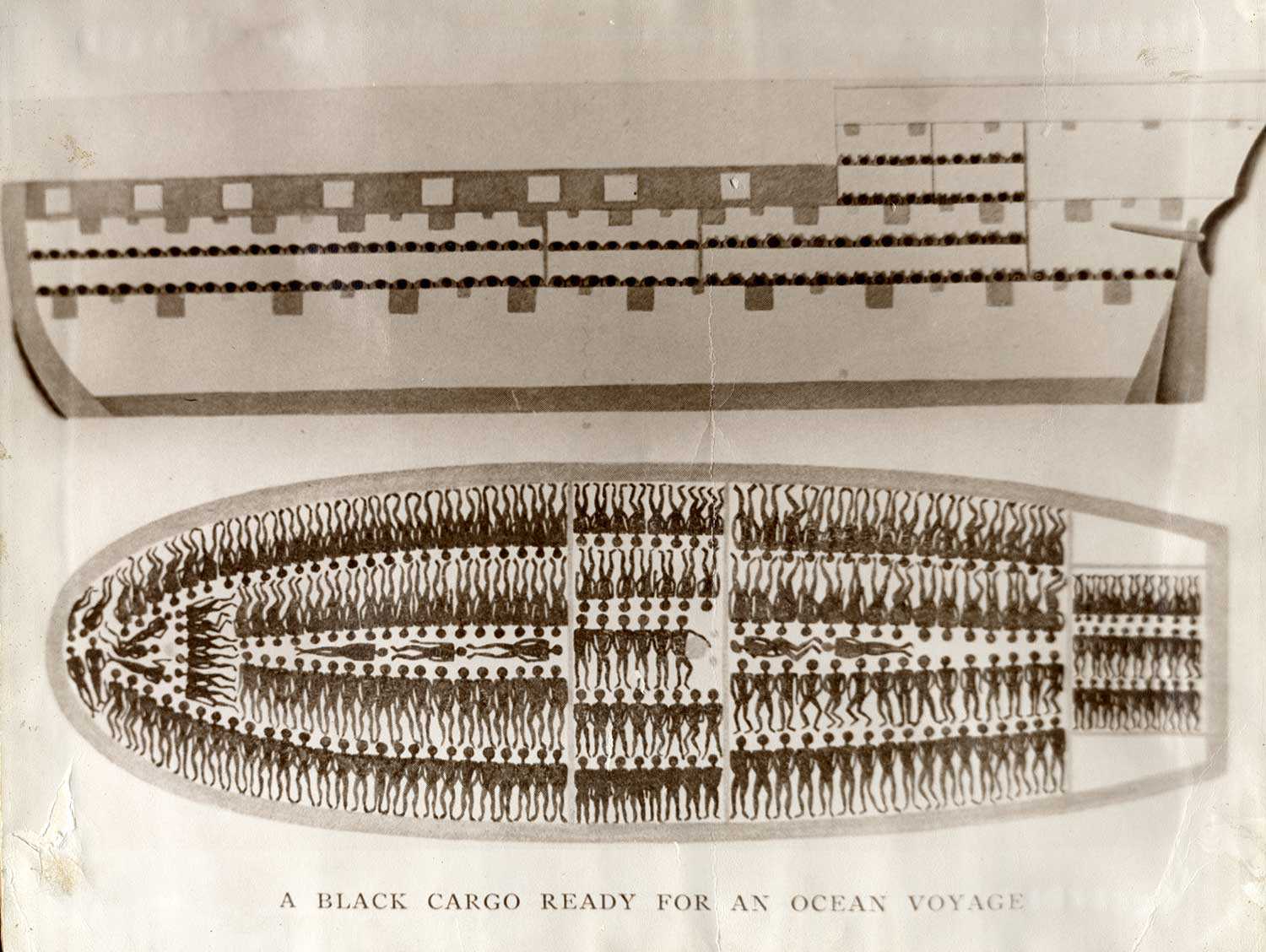
- 27 Jul 2007
- Black heritage
- Author: Ontario Heritage Trust,
Timeline to freedom
3500 BC to 332 BC – Slavery is practised in ancient Egypt as prisoners are sold as slaves 1500s – Beginning of the European slave...
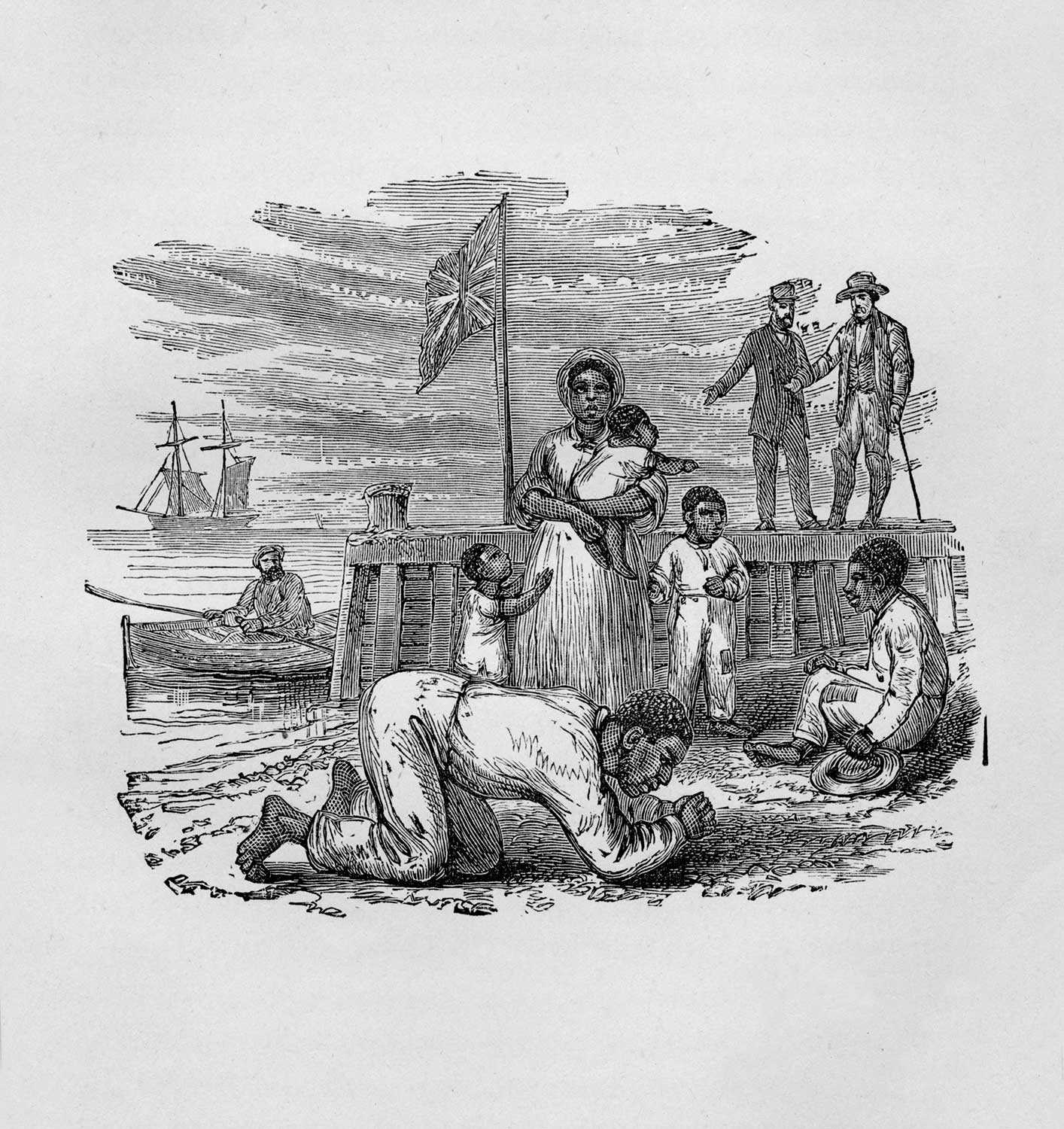
- 27 Jul 2007
- Black heritage
- Author: Dr. Afua Cooper,
Slavery in Ontario
Slavery – one of the world’s oldest institutions, practised in almost every society – became increasingly identified with the Black peoples of Africa because of...

- 10 May 2007
- Buildings and architecture
Community
Tools for conservation - Author: Beth Hanna,
The R’s of conservation
An earlier generation spoke of the three R’s as “Reading, ‘riting and ‘rithmetic.” They were the fundamentals of education in the 19th century and considered...

- 10 May 2007
- Buildings and architecture
Community
Tools for conservation - Author: Sean Fraser,
Leading the way in municipal heritage planning
What’s happening in your community? With significant amendments to the Ontario Heritage Act in April 2005 and a strengthening of the Provincial Policy Statement (PPS)...

- 15 Feb 2007
- Community
- Author: The Honourable James K. Bartleman,
In the beginning . . . the first provincial plaque
Fifty years ago – on a fine fall afternoon, September 26, 1956 – I witnessed the unveiling of Ontario’s first provincial plaque in my hometown...

- 15 Feb 2007
- Buildings and architecture
Community - Author: Kiki Aravopoulos,
Exploring Country Heritage Park
In March 2006, the Ontario Heritage Trust acquired a cultural conservation easement on Country Heritage Park. Located in Milton, this designed heritage attraction was created...
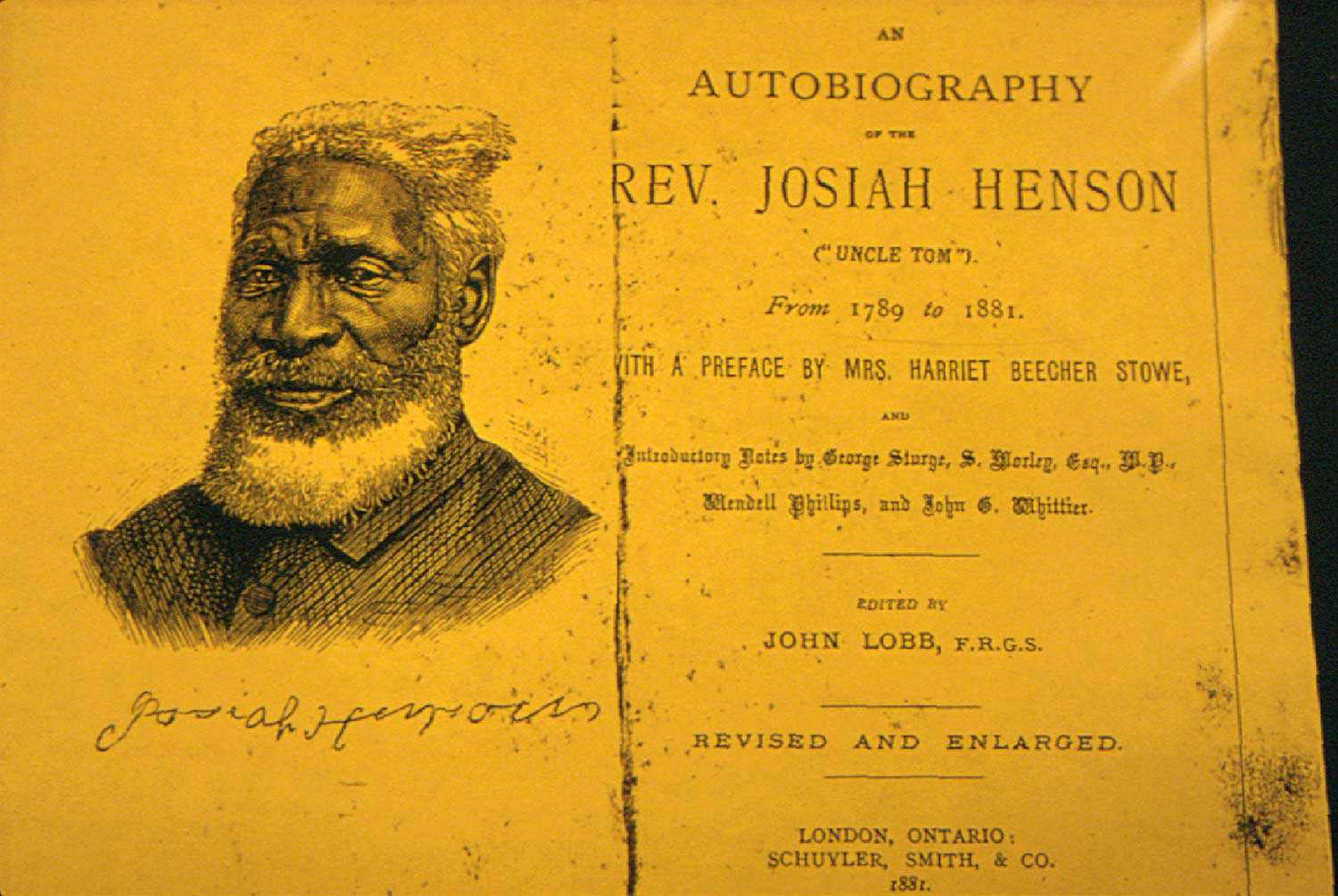
- 15 Feb 2007
- Black heritage
Cultural objects - Author: Wayne Kelly and Steven Cook,
Carving out a place in our history
Josiah Henson travelled to London, England in 1851 to attend the first World’s Fair – also known as the Great Exhibition or Crystal Palace Exhibition...

- 15 Feb 2007
- Black heritage
Buildings and architecture
Natural heritage - Author: Gordon Pim,
Heritage by numbers
Ontario’s heritage is an immense and complex jigsaw puzzle. Every individual element of heritage creates a whole . . . a sort of heritage by...

- 07 Sep 2006
- Buildings and architecture
Community - Author: Louise Burchell,
Saving the Spencerville Mill – Preserving community heritage
The Spencerville Mill, a fine cut-stone flour and grist mill, is located on the bank of the South Nation River in the small rural village...

- 07 Sep 2006
- Black heritage
- Author: Steven Cook,
"I'll use my freedom well"
A world-class exhibit honouring a Canadian of national historic significance was launched this spring at the internationally renowned Uncle Tom’s Cabin Historic Site in Dresden...

- 07 Sep 2006
- Community
Cultural landscapes - Author: Romas Bubelis,
Rush and remembrance
On a windswept summer day in 2005, a small congregation gathered beside a cloverleaf off-ramp at the western fringe of Toronto. In Richview-Willow Grove Cemetery...

- 07 Sep 2006
- Buildings and architecture
Community
Cultural objects - Author: Erin Semande,
The biography of a house: If these walls could speak
Researching family history is a popular pastime for many who want to uncover their family’s unique past and discover how they contributed to Ontario’s growth...

- 16 Feb 2006
- Buildings and architecture
Community
Tools for conservation - Author: Gordon Pim,
Winning the battle
There are countless examples across the province of successful restorations of Ontario’s treasured heritage sites. Although the challenges are great – funding being the primary...

- 16 Feb 2006
- Buildings and architecture
Community
Adaptive reuse - Author: Sean Fraser,
Our cultural heritage places: how heritage buildings adapt
Although heritage remains a year-round activity for many of us, Heritage Day is celebrated annually on the third Monday in February. This year’s theme speaks...

- 16 Feb 2006
- Black heritage
- Author: Karolyn Smardz Frost,
The birth of Black History Month
Ontario’s Black History Month began in the United States as “Negro History Week.” This American celebration of Black history and culture was initiated in 192...

- 16 Feb 2006
- Buildings and architecture
Community - Author: Tim Mallon,
Small-town museums key to small-town success
For 18 years, my wife and I raised our two sons in the Town of Richmond Hill just north of Toronto. When we moved to...

- 08 Sep 2005
- Buildings and architecture
Community - Author: David Cuming,
Moving forward with heritage conservation
Thirty years ago, when the Ontario Heritage Act was new, I was a young planner with about a year’s experience working in London, England and...

- 08 Sep 2005
- Black heritage
- Author: Steven Cook,
Celebrating Emancipation Day: The greatest freedom show on earth
His name was Walter Perry; they called him "Mr. Emancipation." Born in Windsor in 1899, this great-grandson of slaves drew thousands of spectators each year...

- 08 Sep 2005
- Buildings and architecture
Natural heritage
Community
Cultural landscapes - Author: Richard Moorhouse and Beth Hanna,
The new Ontario Heritage Act: The evolution of heritage conservation
An important shift has occurred in Ontario’s legislative framework for heritage conservation. On April 28, 2005, the Ontario Heritage Amendment Act (Bill 60) received royal...

- 12 Feb 2005
- Black heritage
Buildings and architecture - Author: Wayne Kelly,
Inside Uncle Tom's Cabin
At a bend in the Sydenham River near the town of Dresden stands Uncle Tom’s Cabin Historic Site. The museum – built on the site...

- 12 Feb 2005
- Natural heritage
Community - Author: Ontario Heritage Trust,
Hurricane Hazel 50 years later
There was little warning about Hurricane Hazel – one of the worst storms in Canada’s history. At the time, few Canadians paid attention to tropical...
- Accessibility
- Privacy statement
- Terms of use
- © King's Printer for Ontario, 2023
- Photos © Ontario Heritage Trust, unless otherwise indicated.

- Accessibility
- Privacy statement
- Terms of use
- © King's Printer for Ontario, 2023
- Photos © Ontario Heritage Trust, unless otherwise indicated.

